Before I get into today’s topic some quick news: I’m thrilled to be a part of 30th anniversary edition of the Guitarras del Mundo Festival. Founded by Juan Falú, it’s the most important guitar festival in Argentina and brings concerts to all 23 provinces for an entire week.
There’s a ton of guitar talent here from classical to folkloric to tango and jazz, so I’m really honored. I always dreamed of playing in this festival and I have a pretty funny story about trying to get invited when I was younger…someday I’ll share it here.
If you’ve ever visited Buenos Aires you probably noticed something which looks like a croissant. They’re ubiquitous and they’re called medialunas. But the interesting thing is, these half-moons (sweet or savory) are only one part of a much larger group, whose other members don’t hang out in public quite so much. Medialunas are tip of the iceberg, and the iceberg is called facturas.
And like most things here, there’s much more to facturas than meets the eye. So let’s take a quick tour, and I’ll explain 5 things that make them much more than a pastry.
1. Variety
The classic panadería (bakery) is one of the pillars of civilization, and if you move to a new neighborhood you immediately want to find the best one (along with the best pizzeria and ice cream parlor). In each one you’ll find pretty much the same traditional items, which are quite a few. The Spanish-language Wikipedia article lists 11 types of facturas: 8 sweet and 3 savory. On the sweet side (and they are quite sweet) ingredients include dulce de leche, dulce de membrillo (quince paste), dulce de batata (sweet potato paste), sweet cream, chocolate, sugar, black sugar, and powdered sugar.
2. Odd names
There’s a scene from the wonderful new show “Nada” (a beautiful snapshot of Buenos Aires in 5 episodes) in which Luis Brandoni’s character introduces Robert De Niro’s character to facturas. Throughout the scene we learn some of their colorful names, like vigilante (policeman) or bolas de fraile (friar’s balls). The origin of these names? The pastry-maker’s union, which in the early 20th century had anarchist ties.
3. Social glue
With the exception of medialunas, you don’t eat facturas in a coffee shop. You eat them at home, with a friend, in the park, and if you’re a musician, at rehearsal. It’s the perfect excuse to get together. If someone wants to drop by and chat, catch up, or ask your advice, the plan becomes instantly more attractive when they say: “I’ll bring facturas.”
4. The price is right
When I lived in New York, the way of catching up with a friend was “meeting for drinks,” which meant traveling to a bar and purchasing expensive beverages. Believe me, buying a dozen facturas and drinking mate at someone’s house is much cheaper, and you can spend hours doing it. And by the way, don’t be fooled by the non-pretentious packaging: If you show up at someone’s house with the unmistakable plain paper inside of a white plastic bag, any Argentine will know you’ve brought an excellent gift. And this decidedly non-hipster aesthetic applies to the panaderías themselves. El Quijote, in my neighborhood, looks the same today as it probably did in 2004, 1984, or 1964.
5. The “fourth meal”
In case you hadn’t heard, dinner time here is around 9 or 10pm. If you’re wondering how people pull that off, the answer is simple: merienda. In some countries this might simply mean “a snack,” but here it’s an afternoon mini-meal. Around 5 or 6pm you’re going to eat something light, either sweet or savory, but you’re going to eat. Facturas, while not recommended on a daily basis, are the perfect merienda food, and one of the most delightful ways to accompany mate, which of course you drink all day, every day.
In summary, facturas are traditional, have lots of variety, and are an easy way to meet one of the big cultural requirements here: finding ways to get together and pass the time.
PS- Argentines who live abroad go to great lengths to acquire facturas in the places they live, and I’m going to be asking them on social media to tell me where the best places are. 👇Here’s mine, just a few blocks from home.
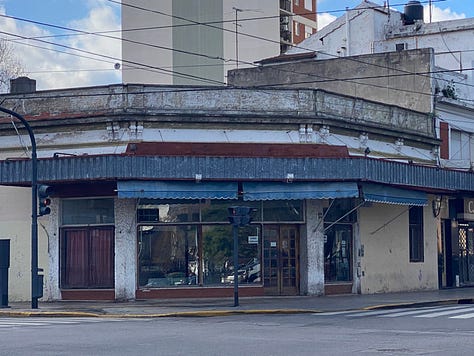
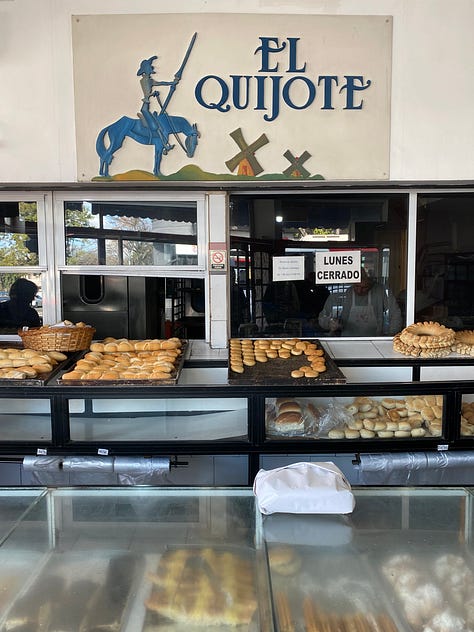
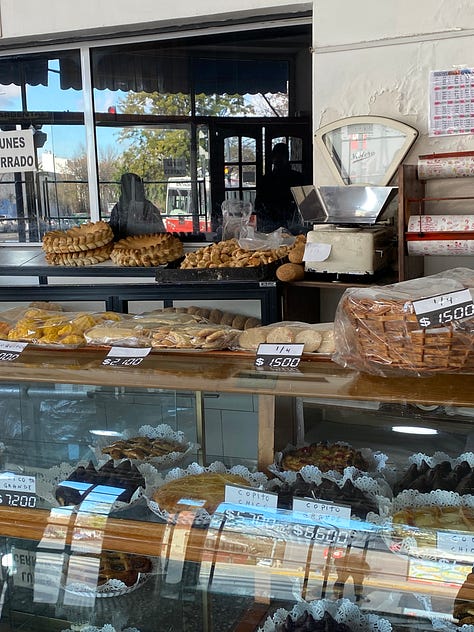
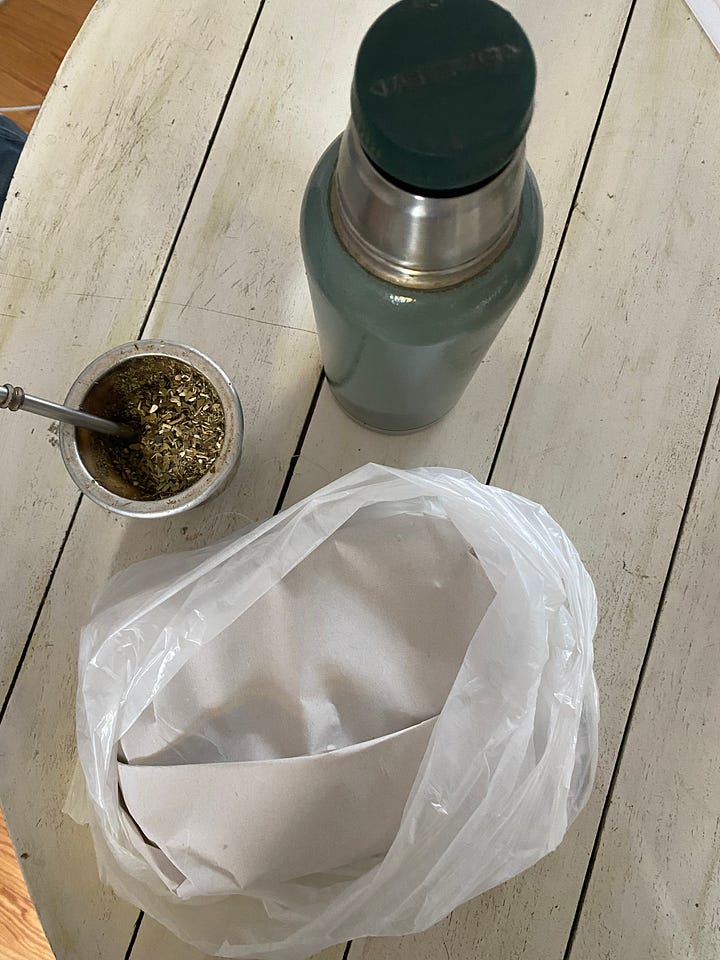
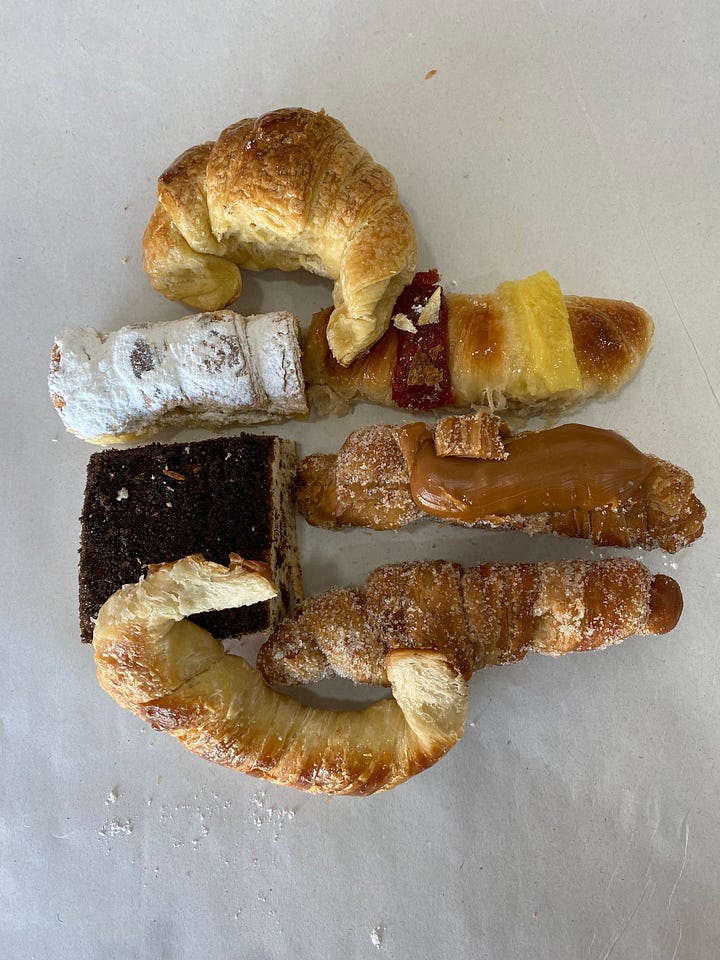
On a recent trip I packed a book: El Sueño by César Aira. It’s the second novel I’ve read by Aira, who I’m thrilled to learn is incredibly prolific, so there’s plenty more where this came from. The narrative evolves from the everyday into the imaginary and even fantastical, involves a newsstand, a neighborhood in the ’90’s, and nuns… and without giving anything away I’ll say that couldn’t put it down and almost finished it after the first two planes.
Something about Aira’s writing really gets me…perhaps it’s the imaginative way he describes common things. Here’s a quote of his which I think might hint at his artistic voice, or even better, might just be a useful piece of advice:
“I believe that improvising, knowing how to adapt and respond to the moment is the key to happiness.”
♫♪𝄞⨾𓍢ִ໋ of the week
Que o la Tumbe Serás - Quinteto del Revés
I’m always on the lookout for new tango music, which is being created all over the world, not just in Argentina. I just found out about this quintet from Chile who play contemporary tango. Congrats to them for waving that flag.
Las cuarenta - Alfredo Sadi
There are still a few classic tangueros among us and Alfredo Sadi is one of them. This Uruguayan singer/guitarist established himself in Buenos Aires years ago and among other things recorded with Roberto Grela, tango’s most beloved guitarist. “Las cuarenta” is Grela’s composition and this track is a rare example of Grela accompanying on solo guitar.
La barca - José Feliciano
I love boleros, and sometimes in addition to the classics (Trío Los Panchos, Los Tres Ases), I’ll dig into José Feliciano’s old recordings. He captures the sound: romantic guitars, bass and percussion, but somehow adds a hint of blues and off-the-cuff playing without disturbing the original essence: intimacy, elegance, and of course romance.


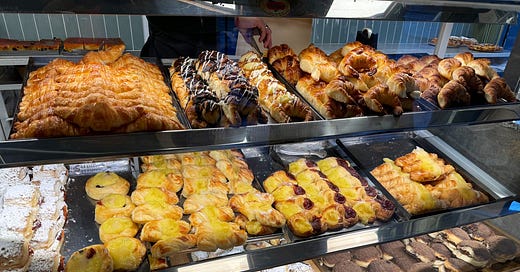



El patio in Rockville Maryland is the place to go for people in the Washington DC area!